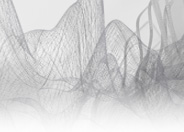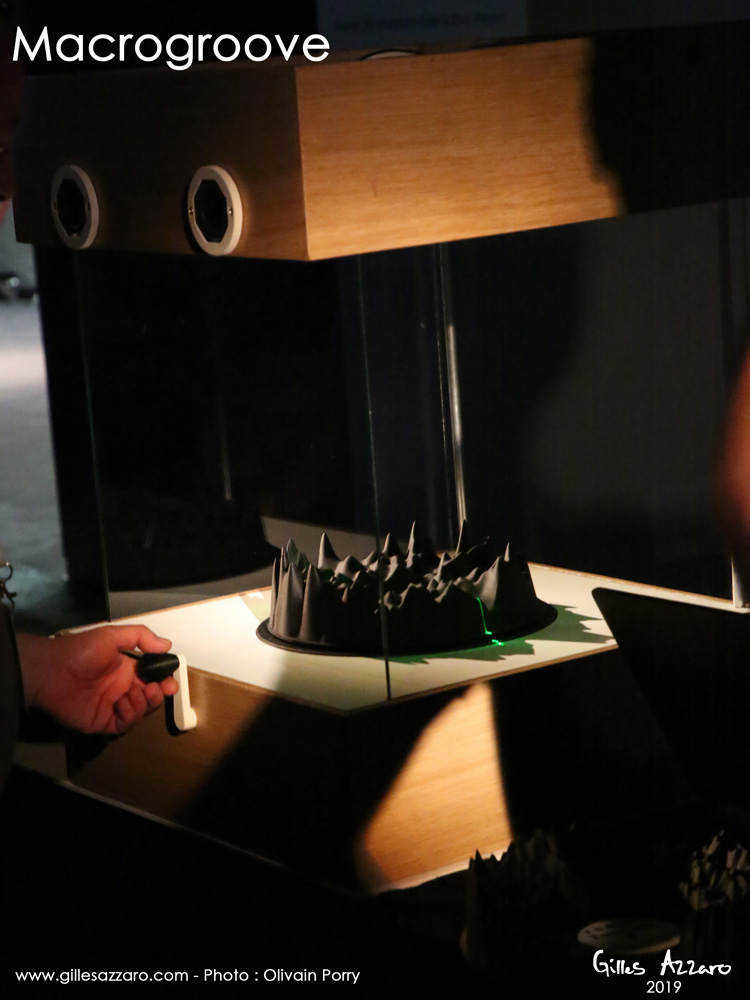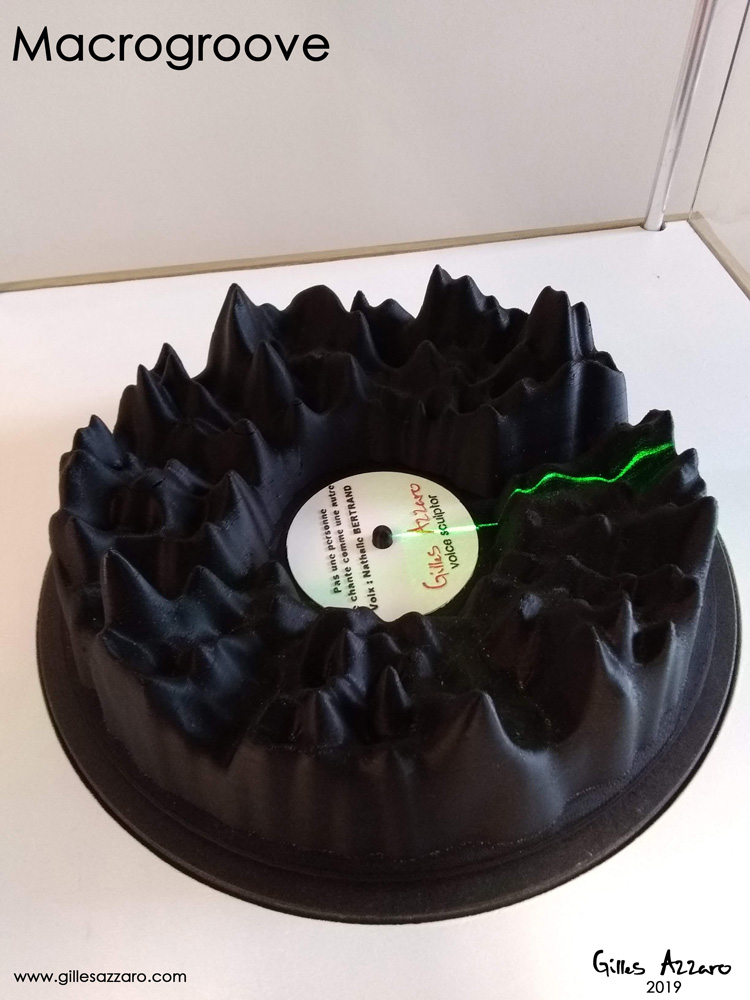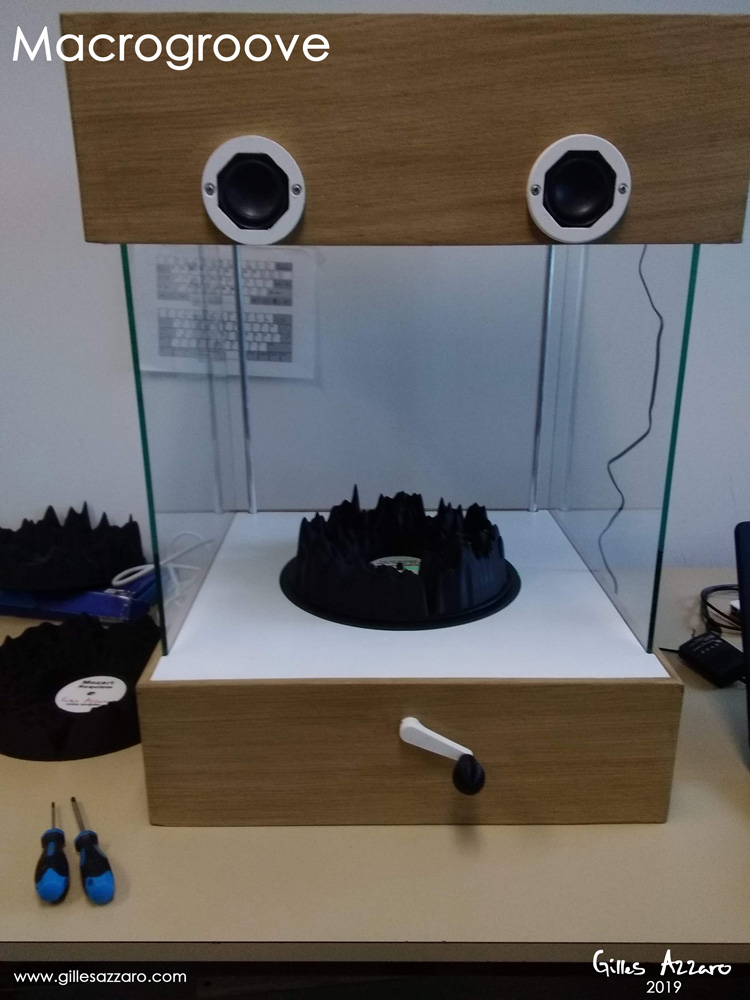| |
|
|
|
|
|
|
|
|
|
||
| |
 |
|
|
||||||||
| |
 |
 |
|
 |
|
|
 |
|
 |
|
|
 |
|
||||||||||
| |
|||||||||||
| |
|
|
|
|
|
|
|
|
|
||
Macrogroove is both a work of art and interactive multimedia system enabling the user to play a coded 3D sound print like a sonogram, which is also in 3D. The user is invited to place a printed record onto the artwork and manually turn the 3D printed circular audio recording whose visual cursor is a laser beam that tracks the form to reproduce the original sound in real-time with the same audio quality as an Audio CD (44 Khz – 16 bits – stereo). This is the first ever 3D printed audio player to achieve such a high quality. Thanks to this creation, the 3D printed audio coding is transformed into computer data that can be read by the Macrogroove, the data is thus rendered both visible and tangible. This reversion process represents a major technological breakthrough, presented here in the form of a work of art, and also a totally innovative and astonishing new application for 3D printing: the transformation of printed plastic into exploitable data.
Macrogroove was first revealed to the public on 21 October 2019 at the international ACM Multimedia 2019 conference in Nice (France).
Gilles Azzaro's work of art is an allusion to the very first audio players, something between a phonograph and barrel organ, with a playful crank that must be handled carefully to get the right read-speed. Currently, the first five printed audio records contain approximately 10 seconds of sound. This will shortly be increased and the turntable will be motor-driven, offering a constant speed for better listening.
The collaboration between the artist and members of the REVA scientific team: There are close links between art and science and Gilles Azzaro imagined the possibility of reading such a 3D sonogram, in other words, design a system capable of transforming a 3D sonogram into sound. Just as a diamond stylus reads the microscopic variations of a vinyl record, or micro-grooves, with the imagined macroscopic version, a sensor moving along the time axis analyses in real time the cross-sections of the form, the Macrogroove. For this to become a reality, Gilles Azzaro called upon the services of the REVA team from the Toulouse IRIT laboratory, a team of multi-media and 3D artificial vision reconstruction experts. To obtain the desired results, the development process took all of six years.The IRIT REVA R&D team members: Paul Chable / Yvain Quéau / Axel Carlier / Jean Mélou / Matthieu Pizenberg / Thomas Forgione / Jean-Denis Durou |



